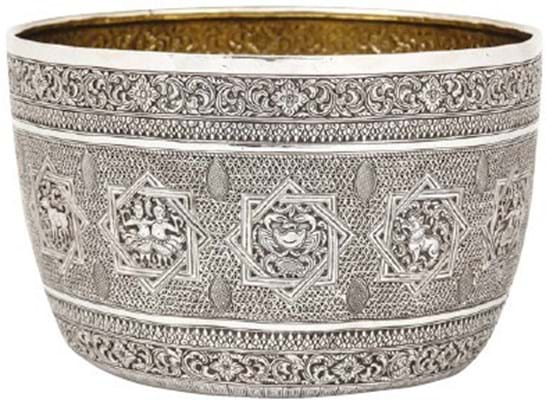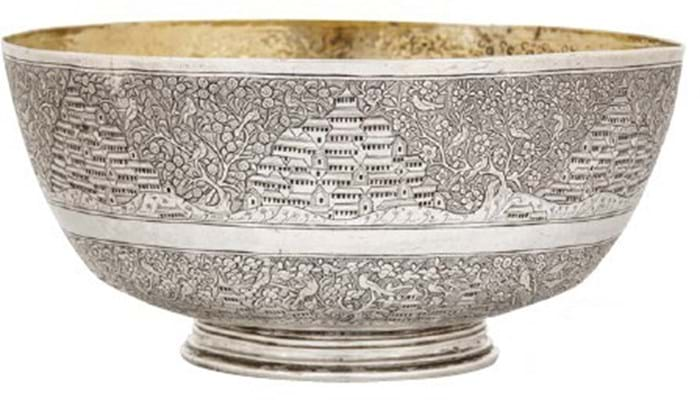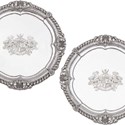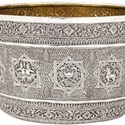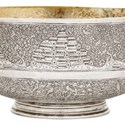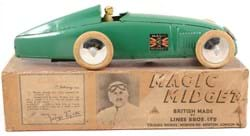A major boost were the 160 pieces – nearly a third of the sale – consigned by noted collector Andrew Milne. “Andrew has amassed his collection over the last 15 years largely at auction,” said John Rogers, Chiswick’s head of silver and vertu.
“It mainly consists of premier makers and partnerships between 1760-1840.”
Milne is ‘thinning out’ but this did not mean a lack of important names – including John Wakelin, John Scofield, Benjamin Smith and Paul Storr.
Super Storr
It was a Storr work which led the June 26 sale in west London: a pair of London 1813, 8in (21cm) diameter salvers with the appeal of armorials for the Duke of Manchester. Both were engraved with a ducal coronet and with a quartered coats of arms for Montague quartering Monthermar as borne by the dukes of Manchester, dukes of Montagu, and earls of Sandwich and earls of Halifax.
Rogers, who believes detailed research into engraved coats of arms as well as makers and provenance is repaid by the interest of bidders, was also able to add a piece of aristocratic scandal to the catalogue notes.
The salvers were made for the fifth duke a year after his wife, Lady Susan Gordon, had run off with her footman. “The Duchess of Manchester is finally parted from he husband, her conduct becoming most notoriously bad,” noted one of the duke’s relations in 1813. The motto engraved on the salvers, Disponendo Me, Non Mutando Me (By Disposing, Not By Changing Me), seemed to reflect the duke’s attitude towards runaway wives.
Quality and provenance combined to propel the salvers from an estimate of £2500-3500 to a winning bid of £6200.
Other Georgian silver from the collection bought by collectors included a set of six London 1776 dinner plates made by John Wakelin and William Taylor for the Earl of Kingston, which went over estimate at £2200 to Ireland, and a rare pair of London 1741 candlesticks by Philip Garden also going above hopes at £3200. A London 1727 soap dish attributed to Thomas England went at the mid-estimate of £1500.
Eastern promise
From another consignment, two pieces of Eastern silver bore the arms and motto of the Cole family, earls of Enniskillen, and the family of Jane Casamaijor, whose father was a highly regarded judge and philanthropist in Madras before returning to London in 1839.
The two silver items may have come to the earl’s Fermanagh home on his marriage to Jane in 1844, or were picked up by the earl during his own travels in the East.
First up was a c.1836 rice bowl base attributed to the Calcutta silversmith and retailer Twentyman & Co. Measuring 8¼in (21cm) diameter and weighing 20oz, it took a top-estimate £500, going to ‘a major UK institution’.
The second Cole-Casamaijor bowl was from Burma, unmarked but a form adopted by British silversmiths from the 1860, especially in Scotland by teapot makers. Finely chased with zodiac symbols, the 5in (12.5cm) diameter bowl was deemed worthy of the catalogue cover illustration and a winning bid of £1900 from an international collector.
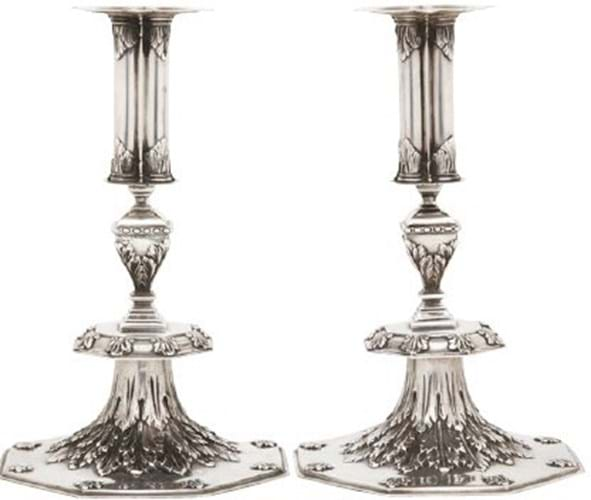
A pair of Comyns 1935 candlesticks – £1300.
Among a smattering of 20th century pieces, the best seller was a pair of London 1935 candlesticks made in 17th century manner by Richard Comyns.
The 11.75in (30cm), 58oz sticks with embossed acanthus leaf decoration and applied acanthus prunts, went within estimate at £1300 to a collector who specialises in Comyns’ work.



